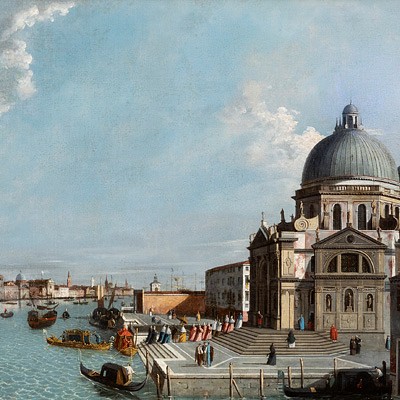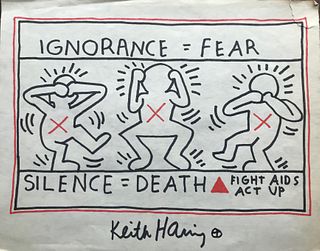JOSÉ MARÍA SERT BADÍA (Barcelona, 1874-1945). "Summer or Africa", 1920. Set of three preparatory sketches for the three final panels of the work "The
Lot 66
About Seller
Setdart Auction House
Carrer Aragó 346
Barcelona
Spain
Setdart Subastas was born in 2004 and is currently the first online art auction in Spain with solidity, prestige and reliability guaranteed by our more than 60,000 users. Setdart has a young, dynamic and enterprising team ready to successfully manage the purchase and sale of art works through custom...Read more
Categories
Estimate:
EUR€50,000 - EUR€60,000
$54,347.83 - $65,217.39
Absentee vs Live bid
Two ways to bid:
- Leave a max absentee bid and the platform will bid on your behalf up to your maximum bid during the live auction.
- Bid live during the auction and your bids will be submitted real-time to the auctioneer.
Bid Increments
| Price | Bid Increment |
|---|---|
| EUR€0 | EUR€10 |
| EUR€200 | EUR€25 |
| EUR€500 | EUR€50 |
| EUR€1,000 | EUR€100 |
| EUR€3,000 | EUR€200 |
| EUR€5,000 | EUR€500 |
| EUR€10,000 | EUR€1,000 |
| EUR€20,000 | EUR€2,000 |
| EUR€50,000 | EUR€5,000 |
About Auction
By Setdart Auction House
May 18, 2021
Set Reminder
2021-05-18 09:30:00
2021-05-18 09:30:00
America/New_York
Bidsquare
Bidsquare : Classics XIX and XX
https://www.bidsquare.com/auctions/setdart-auction-house/classics-xix-and-xx-6961
The next 18th May there will be a 19th and 20th Century Classics Auction at Setdart.com There will be a select repertoire of important artists such as Carlos Cruz Diez, Luis Feito, Joan Miró, Fernando Botero, Josep Llimona, Salvador Dalí among others. Setdart Auction House sofia@setdart.com
The next 18th May there will be a 19th and 20th Century Classics Auction at Setdart.com There will be a select repertoire of important artists such as Carlos Cruz Diez, Luis Feito, Joan Miró, Fernando Botero, Josep Llimona, Salvador Dalí among others. Setdart Auction House sofia@setdart.com
- Lot Description
JOSÉ MARÍA SERT BADÍA (Barcelona, 1874-1945). "Summer or Africa", 1920. Set of three preparatory sketches for the three final panels of the work "The Four Seasons", cladding for the dining room of the hunting palace of the Château de Laversine (Chantilly, France), owned by the barons of Rothschild. The side panels (363 x 90 cm and 363 x 91) are currently in the Museo Nacional Centro de Arte Reina Sofía. The central one (310 x 173 cm) belongs to a private collection. Oil on canvas. Provenance: Manuel Barbié Gallery. Definitive work reproduced in “José María Sert. His life and his work ”, Alberto Castillo and Alexandre Cirici Pellicer, Editorial Argós, Plate 28, 1949. Measurements: 66 x 18 cm; 86 x 38 cm (frame) / 66 x 35 cm; 86 x 55 cm (frame) / 66 x 18 cm; 86 x 38 cm (frame). José María Sert decorated the Rothschild pavilion with six mural paintings on wood representing the different parts of the world, a subject that must have been on the artist's mind since he gave free rein to exoticism in the decorations of Kent House and in the scenes of "The Joy of Humanity" that decorated the walls of Lady Ripon's drawing room. In Rothschild the four parts of the world were combined with the four seasons, so that Spring corresponded to Asia, Summer to Africa, Autumn to Europe and Winter to America. Alberto Castillo, an expert on the figure of Sert, notes: "These paintings are far superior in complexity to Sert's previous compositions, in which when multiple figures were presented, they were generally comparsas without personality. In this case, each figure has received special care and the groups have been composed with a meticulous attention to detail, which is uncommon in the artist's work". We find ourselves, therefore, in front of the allegory of summer, formed by three compositions: the most important (the central one) has in the foreground a group of characters on a background of palm trees. A monster seated on top of a grandstand, with its front legs on the mythical mirror ball and its enormous jaws open, suffers the arrows of three archers who, mysteriously, draw their bows without visible strings. Next to the monster, sinister characters, such as a fairground charlatan and two figures struggling with each other; the panels that complete this African scene (right and left) show us fantastically dressed figures accompanied by small elephants varnished in blue. The three compositions ultimately present trunks carrying a large candle, in a primitivist manner, in a compositional display typical of one of the geniuses of Catalan painting. Trained with Benito Mercadé and Pere Borrell, Sert was a member of the Círculo Artístico de Sant Lluc, and later a disciple of A. de Riquer. In 1900 Torras i Bages commissioned a large mural decoration for the cathedral of Vic, of which he presented sketches and preparatory canvases in 1905 and 1907 in Barcelona and Paris, of which this piece is an example. Through his exhibitions abroad, he soon acquired extraordinary prestige among the French and English aristocracy, for whom he created sumptuous decorations. In 1908 he decorated the Sala de los Pasos Perdidos of the Palace of Justice in Barcelona, and in 1910 he presented at the Salon d'Automne in Paris the mural decoration of the ballroom of the Marquis of Alella (Barcelona) and decorated the music room of the Princess of Polignac in Paris. Two years later he exhibited an important group of works at the Salon in the French capital. In the following years he worked for Queen Victoria Eugenia (Santander) and for Robert Rotschild (Chantilly), and exhibited individually in London, in the Agnew room. In 1920 he married Maria Godebska, "Misia", muse of the ambience, in Paris.
- Shipping Info
-
In-House Shipping
-
- Buyer's Premium



 EUR
EUR CAD
CAD AUD
AUD GBP
GBP MXN
MXN HKD
HKD CNY
CNY MYR
MYR SEK
SEK SGD
SGD CHF
CHF THB
THB



















